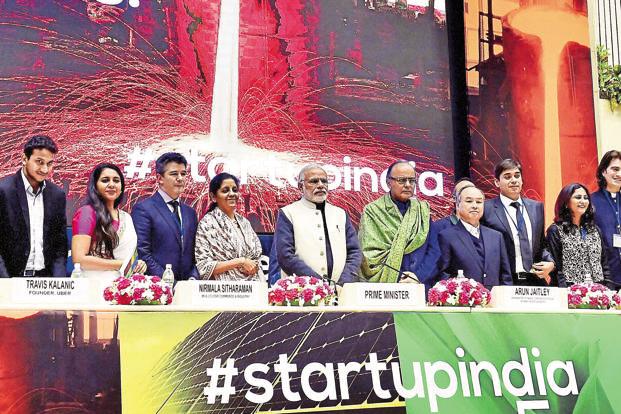
Early last year, when the ongoing downturn in India’s start-up market was beginning to get serious, the central government decided to step in and fix what it saw as some key problems. One of those was the woefully small presence of a self-reliant, domestic venture capital industry. In January, as part of its ambitious Start-up India programme, it announced the Rs10,000 crore (roughly $1.5 billion) Fund-of-Funds for Start-ups (FFS) that would invest in local venture capital funds which would, in turn, back early stage start-ups. A little over 12 months later, FFS remains a bit of a non-starter.
Soon after it was announced, Rs500 crore (about $75 million) was allocated to the Small Industries Development Bank of India (Sidbi), the agency entrusted with managing FFS on behalf of the government, for fiscal year 2015-16. An additional Rs600 crore (about $90 million) was earmarked for the current fiscal year that ends in March. Out of the first tranche of Rs500 crore, only Rs129 crore ($19.2 million) has been sanctioned to venture capital funds.
The slow deployment isn’t for lack of interest among local venture capital firms. Rather, based on conversations Mint had with several fund managers, interest is quite high. “Raising a fund, especially in a market like India, is a huge challenge. There aren’t very many large domestic limited partners (or LPs, industry parlance for investors in venture capital funds) readily available. If the government as a LP is willing to commit 20-30% of a fund’s corpus, it’s a huge leg-up for a first-time fund,” says Manish Singhal, co-founder of Bengaluru-based pi Ventures which is in the midst of raising a $30 million maiden fund. He declined comment on whether the firm had applied for an allocation from FFS.
Mukul Singhal, co-founder of Pravega Ventures, seconds that view. “Remember, this (venture capital) is a very high entry-barrier business. The costs of starting up are not trivial. Plus, even if one has prior track record in the business, getting institutional investors on board isn’t easy for a first-time fund,” he says. Delhi-based Pravega is raising a $30 million debut fund and is in line for an allocation from FFS. “Due-diligence by LPs is tougher in the case of first-time funds. A sanction letter from the government certainly helps with credibility,” says Anil Joshi, co-founder of Mumbai-based Unicorn India Ventures which is raising a $15 million maiden fund that is also in line for a commitment from FFS.
What’s become a thorn in the side of firms such as Pravega, Unicorn and pi Ventures is the investment restrictions that come along with FFS. By mandate, FFS can only invest in venture capital funds that are registered with the Securities and Exchange Board of India under the AIF (Alternative Investment Funds) regulations. Such venture capital funds can raise capital from FFS on the condition that they invest only in start-ups that are in compliance with the criteria prescribed by the department of industrial policy and promotion (DIPP). That means the start-up must be at most five years old at the time of raising capital from a FFS-backed venture capital fund. Further, the venture capital fund cannot make follow-on investments in an existing portfolio company if it crosses the five-year mark by even a day.
In a nutshell, the terms laid down by FFS strike at the core operating principles of the venture capital business. A venture capital fund will typically participate in successive funding rounds in a portfolio company for a few reasons. One, it would want to prevent its equity stake from being diluted when a new investor inevitably brings in fresh capital in the next funding round. It is important for venture capital funds, especially those that invest at the seed and Series A stages, to continue to hold a meaningful stake in a start-up through its life cycle in the interest of harvesting profitable returns later. Two, during a downturn, when money and new investors are scarce, the existing…

